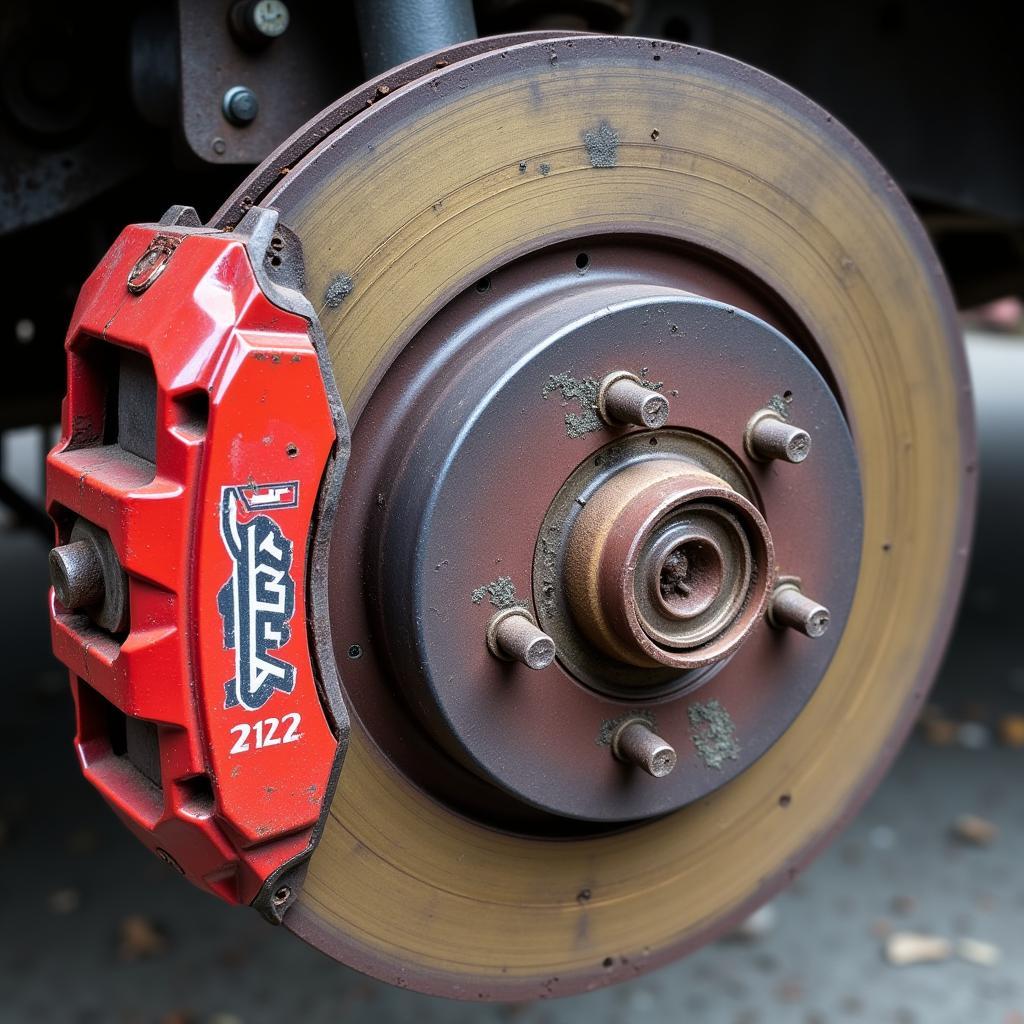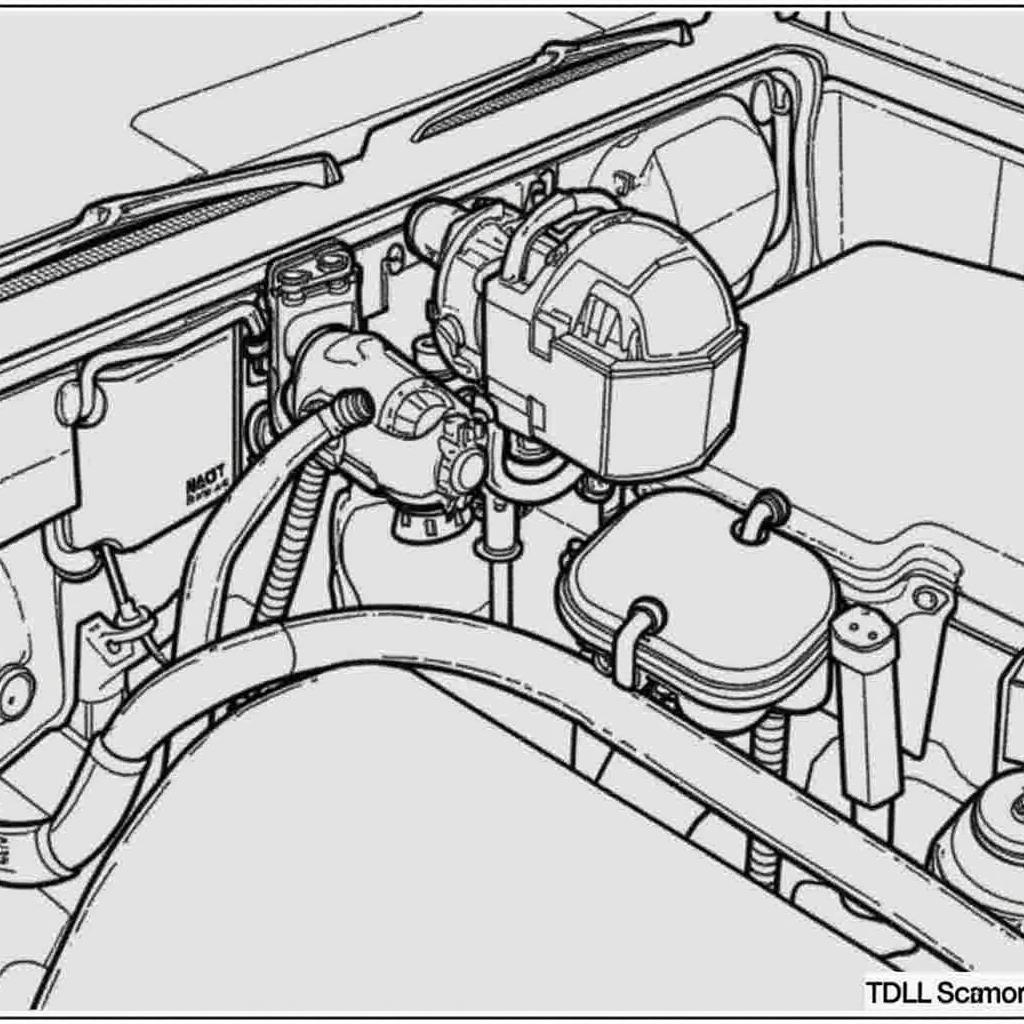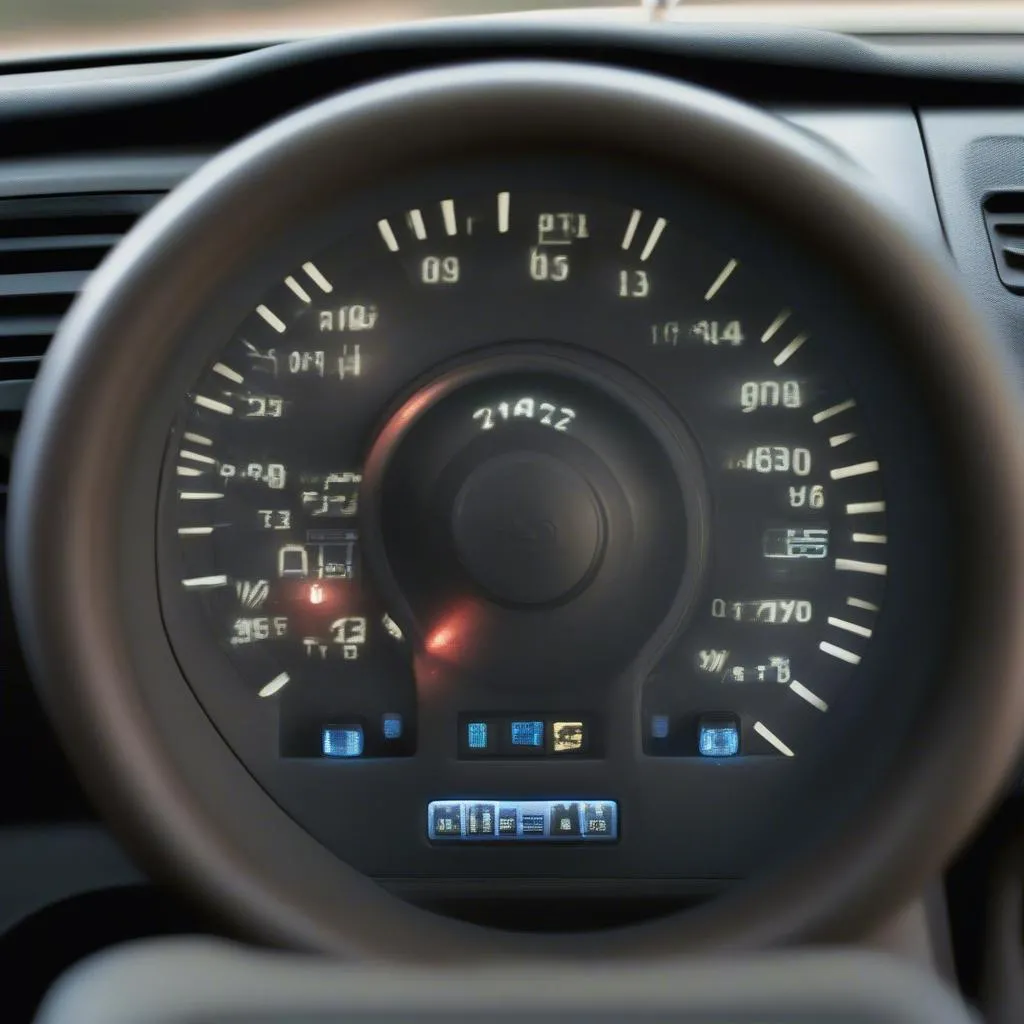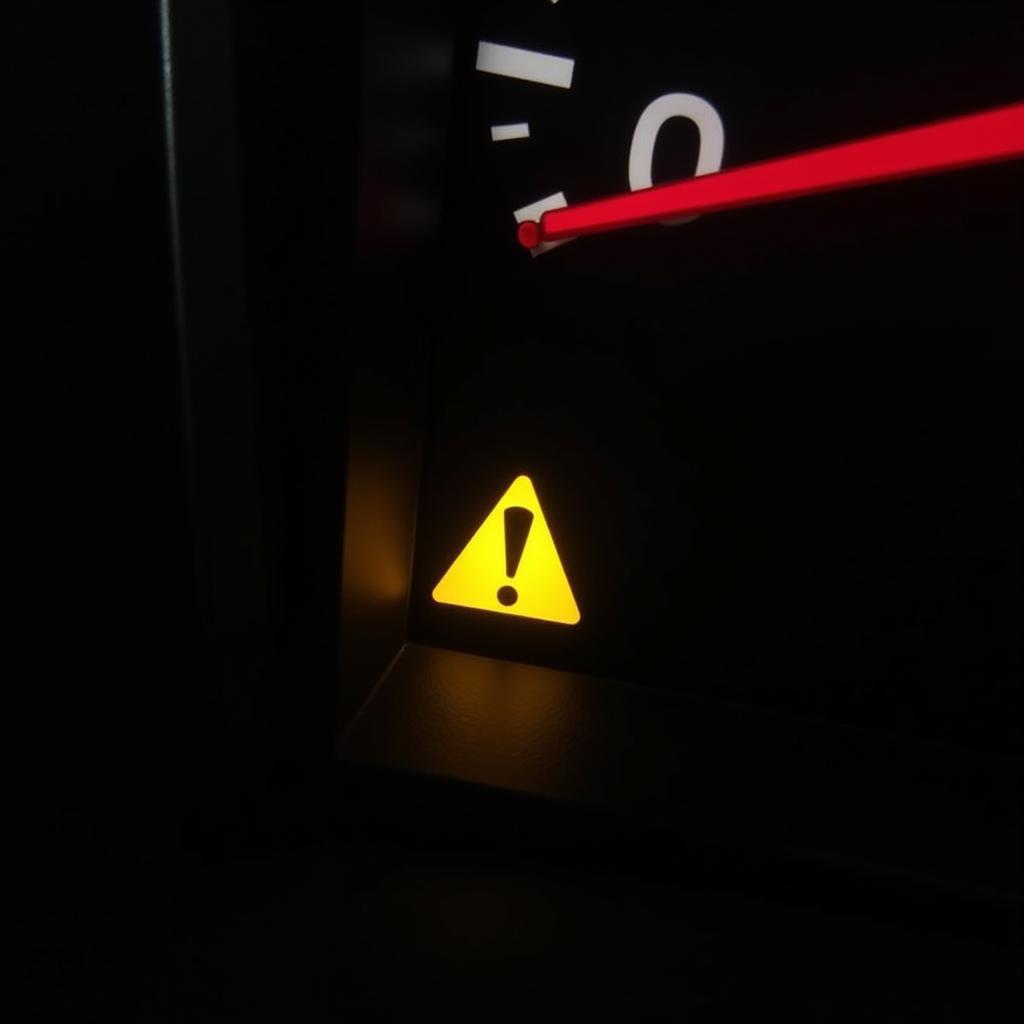A glowing brake warning light on your 1989 Chevy truck’s dashboard is a clear sign that something isn’t right with your braking system. While it can be alarming, it’s important to address the issue promptly to ensure your safety and the safety of others on the road. This comprehensive guide will walk you through the common causes of a brake warning light in a 1989 Chevy truck and provide you with the steps to diagnose and potentially fix the problem.
Understanding Your Truck’s Brake Warning System
Before we delve into troubleshooting, it’s helpful to understand how your truck’s brake warning system works. The warning light is connected to several components, including:
- Parking Brake: The light will illuminate if your parking brake is engaged.
- Brake Fluid Level: A low brake fluid level is a common culprit behind the warning light.
- Brake Hydraulic System: Leaks or issues within the hydraulic system, such as failing brake lines or a malfunctioning master cylinder, can trigger the warning light.
- Brake Pads: Worn brake pads often have a sensor that activates the warning light when they reach a certain level of wear.
Common Causes of a 1989 Chevy Truck Brake Warning Light
Let’s explore some of the most frequent reasons why your 1989 Chevy truck’s brake warning light might be on:
1. Low Brake Fluid
As brake pads wear down, the brake fluid level in the master cylinder naturally decreases. However, if the fluid level drops significantly, it’s often a sign of a leak in the brake lines, calipers, or wheel cylinders.
Troubleshooting Tip:
Check the brake fluid level in the master cylinder reservoir. If it’s low, add the appropriate brake fluid (as specified in your owner’s manual) to the “MAX” line. Inspect carefully for any signs of leaks around the master cylinder, brake lines, and near the wheels.
2. Worn Brake Pads
Brake pads are designed to wear down over time. When they reach a certain thinness, a sensor (if equipped) will make contact with the rotor, triggering the brake warning light.
Troubleshooting Tip:
Inspect your brake pads by looking through the spaces between the wheel spokes. If you see less than 1/4 inch of friction material remaining on the pads, it’s time for a replacement.
 Worn Brake Pads on a 1989 Chevy Truck
Worn Brake Pads on a 1989 Chevy Truck
3. Faulty Brake Light Switch
The brake light switch is responsible for activating your brake lights when you press the pedal. Sometimes, this switch can malfunction, causing the brake lights to stay on or not function properly, which can also trigger the warning light.
Troubleshooting Tip:
Locate the brake light switch (typically mounted above the brake pedal arm). Check if the switch is properly adjusted and that the electrical connector is secure. If you suspect a faulty switch, replacement is generally straightforward.
4. ABS System Malfunction (If Equipped)
Some 1989 Chevy trucks came equipped with an Anti-lock Braking System (ABS). If your truck has ABS and there’s a problem with the system, a separate ABS warning light might illuminate on the dashboard, or it could trigger the general brake warning light.
Troubleshooting Tip:
Diagnosing ABS issues usually requires a professional-grade scan tool to read the ABS module’s diagnostic trouble codes (DTCs).
 1989 Chevy Truck ABS Module Location
1989 Chevy Truck ABS Module Location
5. Bad Brake Caliper or Wheel Cylinder
A seized brake caliper or a leaking wheel cylinder can cause uneven braking, a spongy brake pedal, and often illuminate the brake warning light.
Troubleshooting Tip:
Inspect the calipers and wheel cylinders for any signs of leaks or sticking. A seized caliper might cause the brake pads on one side to wear out faster than the other.
When to Seek Professional Help
While some brake warning light issues can be addressed with basic DIY troubleshooting, it’s essential to know your limitations. If you’re uncomfortable working on your truck’s braking system, or if you suspect a more complex issue such as a hydraulic system failure or ABS problem, it’s safest to seek help from a qualified mechanic.
“Brakes are the most crucial safety system in your vehicle,” says veteran mechanic John Riley. “Never hesitate to have a professional inspect your brakes if you’re unsure about any aspect of their operation or repair.”
Conclusion
A brake warning light on your 1989 Chevy truck should never be ignored. By understanding the common causes and following the troubleshooting tips outlined in this guide, you can take the necessary steps to identify the problem. Remember, when it comes to your safety and the safety of others, err on the side of caution and consult with a qualified mechanic if needed to ensure your brakes are in optimal working order.


